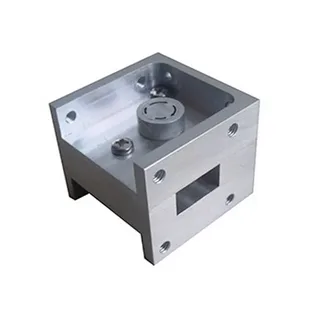RF Isolators and Circulators: Key Components in Wireless Communication Systems Industry

What are RF Isolators and Circulators?
Radio frequency (RF) isolators and circulators are passive microwave components that are used to control and direct the flow of RF signals in wireless communication systems. They play an important role in enabling the transmission and reception of RF signals with minimal interference between transmission and reception paths.
How do RF Isolators Work?
An RF Isolators and Circulators is a non-reciprocal three-port device that allows signals to pass through it in only one direction. It blocks signals from passing through in the opposite direction, thereby providing isolation between two ports. Isolators have two input/output ports and an isolated port. Signals can pass from port 1 to port 2 but not vice versa. This one-way signal flow property makes isolators useful for separating transmit and receive signals in duplex communication systems where transmission and reception occur simultaneously.
Isolators find application in antenna duplexers to isolate the transmitting antenna port from the receiving antenna port, allowing the antennas to be shared for both transmission and reception. They are also used in receivers to block returned transmitter leakage from interfering with the received signal. Common isolation levels provided by isolators range from 15-30 dB. Higher isolation levels up to 60 dB are achievable depending on the component design and operating frequency.
How do RF Circulators Work?
An RF circulator is a multiport network device that directs an input RF signal to one output port and isolates it from all other ports. It has the property of rotating the signal path in a clockwise or counterclockwise direction between its ports. A three-port circulator allows signals to pass from port 1 to port 2, from port 2 to port 3, and from port 3 back to port 1, in that order. Reverse travel of signals between ports is not permitted.
Circulators are used in radar systems to separate the transmit signal from the received echo signal by directing the transmitted pulse to the antenna port and routing the echoed received signal to the receiver port. They enable the sharing of a single antenna for both transmission and reception. Circulators also find use in repeater isolation, switched-mode power converters, and measuring antenna patterns. Typical RF circulators provide isolation between ports in the 20-30 dB range.
How are RF Isolators and Circulators Implemented?
RF isolators circulators employ the non-reciprocal property of ferromagnetic materials to enable one-way rotation or isolation of signals. The most widely used implementation method utilizes ferrite rods or disks placed inside the waveguide structure of the component. An externally applied static magnetic field is used to bias the ferrite material and introduce non-reciprocity into the component through the magneto-static effects of ferrimagnetism.
The interaction between the RF signal's magnetic field and static bias field inside the ferrite induces non-reciprocal phase shifts between opposing signal propagation directions. This results in different transmission coefficients along the two signal paths, either allowing transmission in one direction while blocking it in the opposite direction as in isolators, or rotating the signal propagation direction as in circulators.
Advanced multilayer thin-film ferrite construction is utilized in monolithic microwave integrated circuit (MMIC) implementations of miniaturized isolators and circulators for high-frequency applications. Recent research also explores the use of new nanomaterial compounds such as hexaferrites as alternatives to conventionally used ferrite materials to achieve even higher isolation or improve properties.
Applications of RF Isolators and Circulators
Isolators and circulators have become indispensable components in modern wireless communication infrastructure and systems. Some key applications include:
- Mobile phone antenna duplexers: Isolators enable separation of transmitter and receiver signals in cellular basestations and handsets.
- Radar transmit/receive modules: Circulators route transmit pulses to antennas and direct received echoes to low-noise receivers.
- Point-to-point radio links: Isolators protect sensitive antenna-mounted receivers in microwave backhaul systems.
- Satcom infrastructure: Circulators are employed in satellite transponders to separate uplink and downlink RF paths.
- RFID readers: Isolators protect tag readers from high-power transmission leaked signals.
- Broadcast/cellular towers: MMIC circulators provide high integration in advanced antenna arrays.
- Power amplifiers: Isolators prevent instability and protect amplifiers due to return loss mismatches.
- Wireless backhaul links: Miniaturized isolators enable high-capacity, high-frequency backhaul radios.
New areas such as 5G/millimeter wave networks, automotive radars, and IoT sensor nodes will drive further innovation and expansion in isolator and circulator technology to meet the needs of emerging wireless technologies. Their unmatched ability to safely transmit and receive RF signals makes them indispensable to wireless communications worldwide.
RF isolators circulators serve as important enabling components that play a critical role in allowing the simultaneous transmission and reception of RF signals as required in duplex communication systems. Their one-way propagation and isolation properties are realized using the phenomenon of non-reciprocity induced in ferromagnetic materials. With continuous improvements, these passive microwave devices will continue powering advancements across various wireless technologies.
Get more insights on, RF Isolators and Circulators
For Deeper Insights, Find the Report in the Language that You want.
About Author:
Money Singh is a seasoned content writer with over four years of experience in the market research sector. Her expertise spans various industries, including food and beverages, biotechnology, chemical and materials, defense and aerospace, consumer goods, etc. (https://www.linkedin.com/in/money-singh-590844163)
- Art
- Causes
- Crafts
- Dance
- Drinks
- Film
- Fitness
- Food
- Jocuri
- Gardening
- Health
- Home
- Literature
- Music
- Networking
- Alte
- Party
- Religion
- Shopping
- Sports
- Theater
- Wellness
- IT, Cloud, Software and Technology


